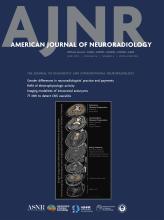Case of the Week
Section Editors: Matylda Machnowska1 and Anvita Pauranik2
1University of Toronto, Toronto, Ontario, Canada
2BC Children's Hospital, University of British Columbia, Vancouver, British Columbia, Canada
Sign up to receive an email alert when a new Case of the Week is posted.
August 9, 2018
Metachromatic Leukodystrophy
- Background:
-
Metachromatic leukodystrophy (MLD) is an autosomal recessive disorder caused by a deficiency of the lysosomal enzyme arylsulfatase A, which is necessary for the normal metabolism of sulfatides (which are important constituents of the myelin sheath).
-
In MLD, sulfatides accumulate in various tissues, including the brain, peripheral nerves, kidneys, liver, and gallbladder. Electromyography and nerve conduction velocity were abnormal in this patient’s case, with a demyelinating sensorimotor neuropathy pattern, and there were increased urine chromatography sulfatide levels.
-
- Clinical Presentation:
-
Three different types of MLD are recognized according to the patient’s age at onset: late infantile, juvenile, and adult.
-
This patient experienced a juvenile onset and presented with motor signs of peripheral neuropathy followed by a deterioration in intellect, speech, and limb weakness.
-
- Key Diagnostic Features:
- With T2WI, MLD manifests as symmetric, confluent areas of high signal intensity in the periventricular and deep white matter, with sparing of the subcortical U-fibers. No enhancement is evident at MR imaging.
- “Tigroid” and “leopard” patterns of demyelination, which suggest sparing of the perivascular white matter, can be seen in the periventricular white matter and centrum semiovale.
- Differential Diagnoses:
- Krabbe disease: Symmetric, altered-signal-intensity foci in the thalami, caudate nuclei, corona radiata, posterior limbs of the internal capsule, and brain stem; shows early involvement of cerebellar white matter
- Pelizaeus-Merzbacher disease: Usually presents in neonates and shows total lack of myelination with atrophic cerebellum
- Canavan disease: Presents early in first decade with megalencephaly; T2WI shows nearly homogeneous high signal intensity throughout the white matter; subcortical U-fibers preferentially affected early in the course of the disease: on MR spectroscopy, characteristic increased NAA peak is seen
- Treatment:
- Currently, no effective treatment is available to reverse the deterioration and loss of function caused by MLD.
- In individuals with asymptomatic late infantile and early juvenile forms of the disease, bone marrow or cord blood transplantation may stabilize neurocognitive function.











